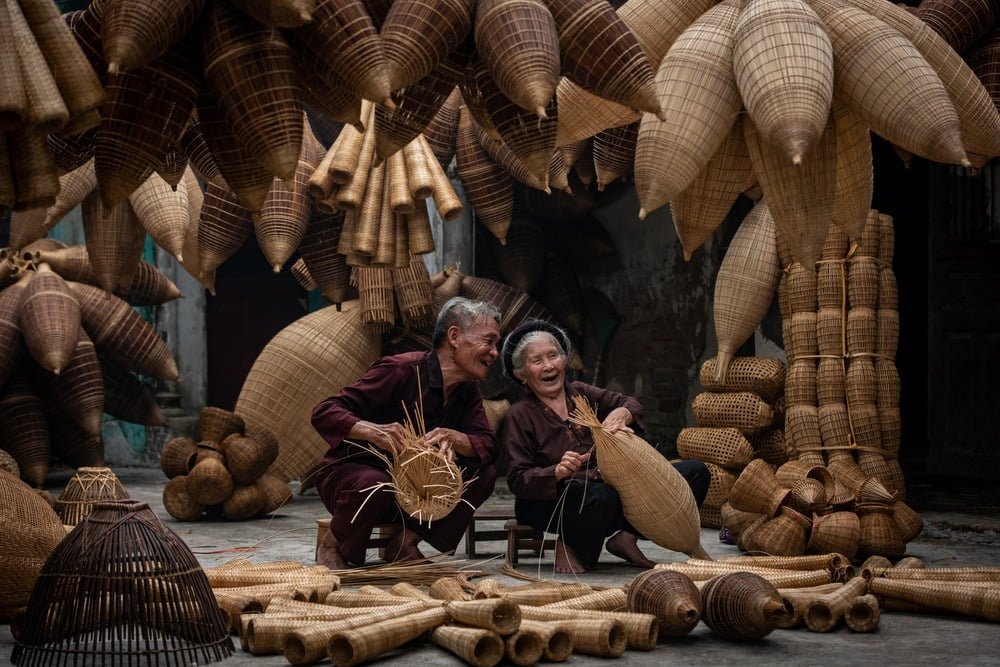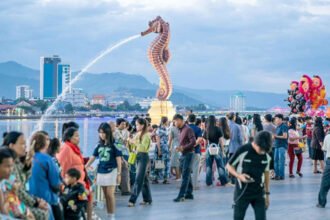Laang Spean, located atop the scenic limestone hill of Phnom Teak Treang in Battambang Province, Cambodia, is a site of immense historical significance. Known as the “Cave of Bridges” for its natural limestone arches, this extraordinary cave exemplifies the enduring legacy of early human civilization in Southeast Asia. It provides a unique glimpse into prehistoric life, covering periods from the Upper Paleolithic to the Neolithic, and highlights the rich cultural heritage of ancient Cambodia.
Unearthing Ancient Human Occupation
The discoveries at Laang Spean offer a tangible connection to the lives of prehistoric humans. One poignant finding is the grave of a man who had not yet reached 50 years old when he passed away. Belonging to a tribe that had settled near the Sangker River in Battambang Province, these early inhabitants likely cultivated fields and raised animals, supplementing their diet by hunting boars and turtles. The man was buried with a turtle, pottery, jewelry, and bangles, all meant to accompany him into the afterlife. These artifacts survived in fossilized form until their discovery thousands of years later by a dedicated team of archaeologists.
Exploring the Cave of Bridges
Laang Spean, with its wide, open mouth and high ceilings, covers about 1,200 square meters and is the largest of the 13 caves on Phnom Teak Treang. This cave has revealed layer upon layer of ancient history, dating back as early as approximately 69,000 BC.
The team has uncovered six graves so far, five men and one woman, believed to be buried between 1,360 BC and 1,400 BC, during the Neolithic Period. These graves contained gifts such as wild boars, pottery, and jewelry, which were likely offerings for the next life. Interestingly, all bodies were buried with their feet facing north and their heads south, except for the woman, whose orientation was reversed. This burial practice, along with the discovery of teeth-cutting traditions similar to those in prehistoric Vietnam and Laos, provides intriguing insights into the cultural practices of the time.
Insights into Social Stratification
The Neolithic layers of Laang Spean reveal fascinating details about the social structure of its inhabitants. The burial sites suggest emerging social stratification, providing valuable insights into the social dynamics and cultural evolution at the dawn of the Metal Ages in Southeast Asia.
Continuity of Discovery
Since 2009, archaeological work at Laang Spean has resumed, revealing significant stratigraphic, chronocultural, and archaeozoological data. The cave has documented 20 stratigraphic units across a vast surface area, reaching depths of up to five meters. This ongoing work has expanded our understanding of the site’s historical timeline.
The team also discovered practical aspects of the ancient people’s lives, such as their skills in hunting, tool-making, and possibly trade. Bangles found at the site, made from sea shells, indicate connections with other groups and suggest early trade networks.
A Glimpse into the Deep Past
One of the most awe-inspiring discoveries at Laang Spean is the rudimentary stone tools found in its deepest layers, dating back approximately 71,000 years BP. These tools, including chert flakes and polyhedral, multiplatform cores, mark some of the earliest evidence of human occupation in the region.
The Significance of Laang Spean
Laang Spean stands as a beacon of Cambodia’s rich prehistoric heritage, offering invaluable insights into the lives, cultures, and technological advancements of ancient civilizations. The cave’s expansive history and continuous human activity demonstrate the significance of this site as a center of prehistoric innovation and cultural development.
The discoveries at Laang Spean provide a profound connection to our prehistoric ancestors. They remind us of the intricate web of life, death, and cultural practices that have shaped human civilization over millennia. As we continue to explore and preserve such sites, we not only honor the past but also enrich our appreciation of humanity’s enduring journey through time.
Educational and Cultural Impact
Laang Spean serves as an educational treasure trove, offering scholars, students, and visitors a unique opportunity to learn about Cambodia’s ancient past. The site is an invaluable resource for understanding early human societies and their ways of life. By studying the artifacts and remains found in Laang Spean, researchers gain a deeper understanding of the cultural practices, technological advancements, and social structures of prehistoric communities.
The cultural impact of Laang Spean extends beyond academia. It fosters a sense of pride and identity among Cambodians, connecting them to their ancestral roots and showcasing the rich heritage of their nation. The site’s preservation and ongoing research highlight the importance of safeguarding historical landmarks, ensuring that future generations can continue to learn from and be inspired by these ancient stories.
Future Prospects
The continued excavation and study of Laang Spean promise to uncover even more about Cambodia’s prehistoric era. Each new finding adds to the complex tapestry of human history in the region, providing valuable insights into the development of early societies. The meticulous documentation and preservation efforts by archaeologists ensure that this knowledge will be accessible for generations to come.
Laang Spean’s significance also opens doors for further archaeological exploration in the surrounding areas. As researchers delve deeper into Cambodia’s prehistoric landscape, they may uncover additional sites that shed light on the ancient civilizations that once thrived here. These discoveries contribute to a broader understanding of Southeast Asia’s prehistoric heritage and its connections to other regions.
Final Reflections
Laang Spean is more than just a cave; it is a gateway to understanding the rich and complex history of prehistoric Cambodia. The site’s remarkable discoveries, from graves to stone tools, offer a window into the lives of ancient communities and their cultural practices. As excavations continue, Laang Spean will undoubtedly reveal more secrets, enriching our knowledge of human history and underscoring the importance of preserving our shared heritage.
By celebrating and studying sites like Laang Spean, we honor the ingenuity and resilience of our ancestors. These ancient stories inspire us to appreciate the depth of human history and the enduring legacy of innovation and cultural evolution. Laang Spean stands as a testament to the rich prehistoric heritage of Cambodia, connecting us to the distant past and inspiring a deeper appreciation for the journey of human civilization.








